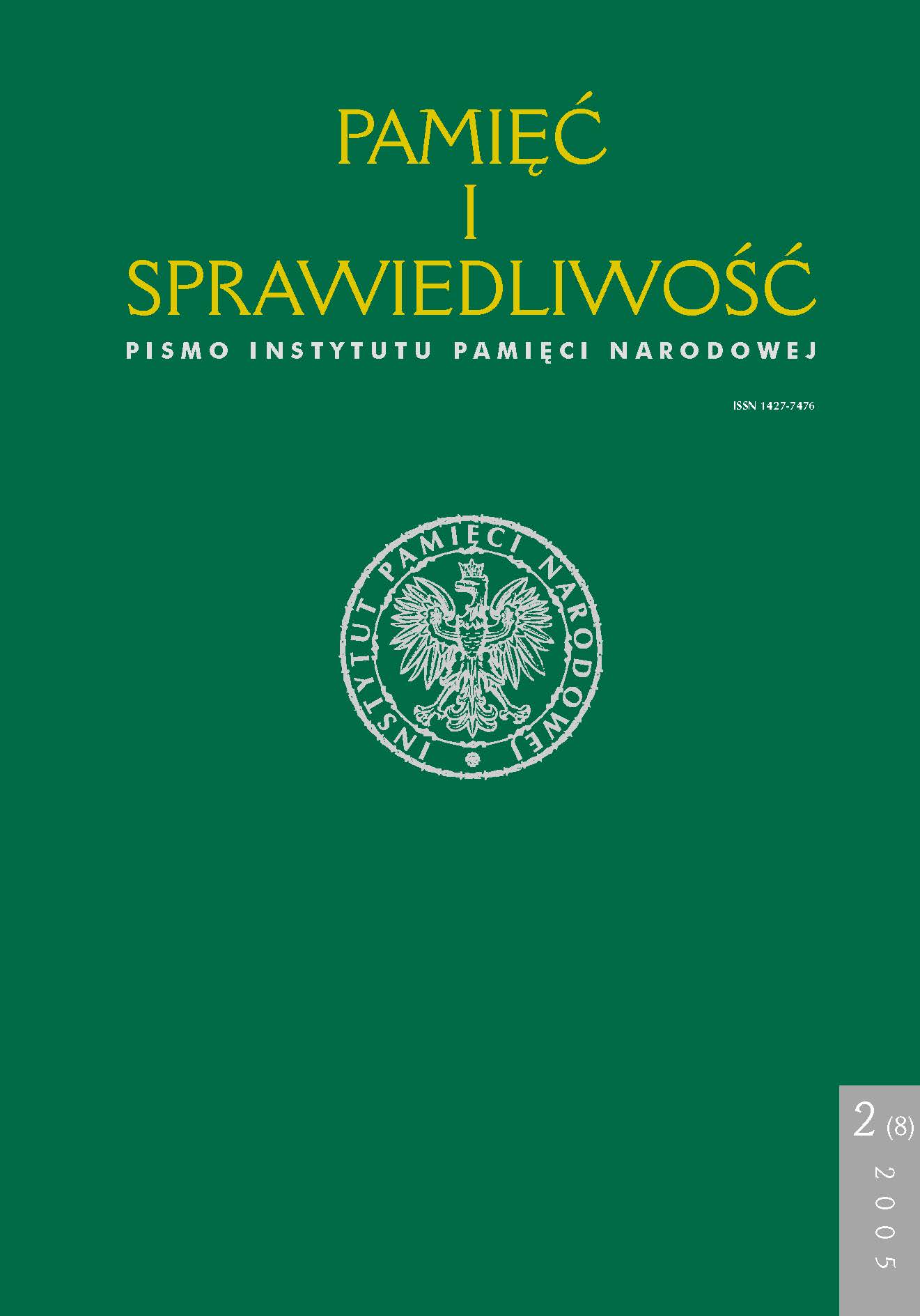System polityczny w Polsce w latach 1944–1948
Pamięć i Sprawiedliwość, Bd. 8 Nr. 2 (2005), pages: 51-70
Publication date: 2005-12-30
Abstract
The political system determines relations between the state or state related institutions like the parliament, the government, the jurisdiction, political organizations and various groups of interests. It also consists of a set of norms and regulations, which provides a base for their functioning: constitutions, electoral law etc. To classify the political system which has been built in Poland since the PKWN, it is necessary to take into account the conception of political regime as a specific form of political organization, a system of official and unofficial norms and mechanisms regulating mutual interaction between the authorities and the society.
When the PKWN took over the power, new mechanisms of exercising power were introduced. A new model of society formed by deatomisation, and so called social engineering was introduced. In order to put social ties under state control an attempt to eliminate private property was made. The new model of society characterized also with a new role of political parties, an exchange of the elites, subordination of the science and education to one ideology. The idea of democratic elections was rejected. Communication and media was under political control. Local and economic local governments were removed. Changes in the trade union movement transformed it into a cell of the political power. The political life was theatricalized and any privacy was politicized.
The communist rule based on five elements (Marxist theses): 1) the politics was monopolized by the Marxist-Leninist party; 2) a candidate for any executive had to be accepted by the party what was know as “the system of nomenclature;” 3) the nationalization
of the economy; 4) the central distribution of all resources; 5) the policy of terror, reprisals and mass propaganda – all thought to gain control of hearts and minds.
The second half of 1944 marks the beginning of the totalitarian system in Poland, which was at its height in 1948–1956. The inconsistent way different elements of the system were bound together allows us to define this incoherent organism as hybrid. The political system which has been built since the PKWN times, based on cooperation of ideologically and organizationally contradictive rules. The analyzed period created manners and
attitudes of those in power and those under control which still remain in effect.
Am häufigsten gelesenen Artikel dieser/dieses Autor/in
- Jerzy Eisler, Andrzej Friszke, Paweł Machcewicz, Andrzej Paczkowski, Janusz Wrona, [Dyskusja] PKWN – próba oceny , Pamięć i Sprawiedliwość: Bd. 8 Nr. 2 (2005)
- Janusz Wrona, Rola PZPR w państwie i społeczeństwie polskim , Pamięć i Sprawiedliwość: Bd. 32 Nr. 2 (2018)
- Janusz Wrona, Uwarunkowania międzynarodowe i wewnętrzne przejmowania władzy w Polsce przez partię komunistyczną , Pamięć i Sprawiedliwość: Bd. 36 Nr. 2 (2020)
 Język Polski
Język Polski
 English
English
 Deutsch
Deutsch
 Français (France)
Français (France)
 Italiano
Italiano
 Русский
Русский


 PDF (Język Polski)
PDF (Język Polski)
